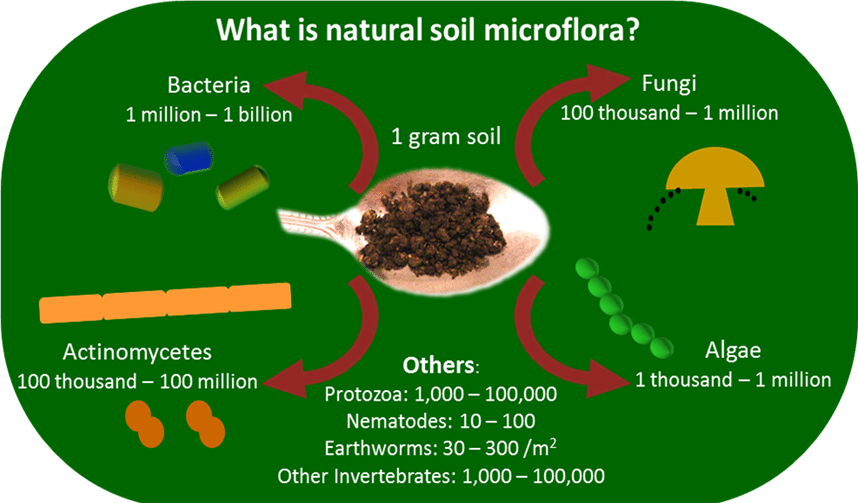
Microbial Flora of soil
The microflora of a soil is an intimate part of soil organic matter; in fact, much of the colloidal portion of humus consists of living and dead microbial cells or their disintegrating residues. The quantity and characteristics of organic matter in any given soil are therefore dependent on the nature of the microflora and their biochemical transformations that no discussion of the role of soil organic matter in plant growth would be complete without a consideration of this microflora population. Four groups of organisms, other than viruses, constitute the microflora population of soil. These are bacteria, actinomycetes, fungi, and algae. Each of these groups is made up of many genera and hundreds of species. Bacteria constitute the most abundant group of microorganisms in soil, and they are also the smallest living organisms, apart from viruses that live in the cells of other organisms. Actinomycetes occur in soils in numbers ranging up to a high of about 200 million per gram, which makes them second only to the true bacteria.


